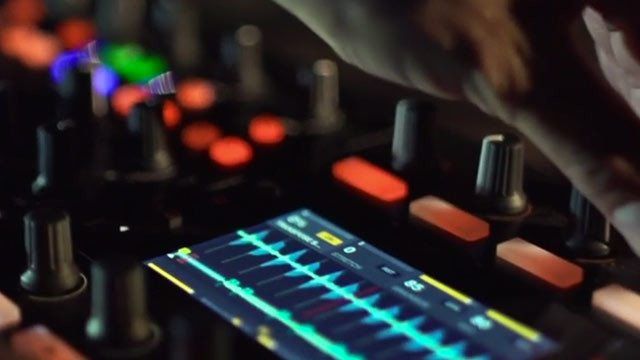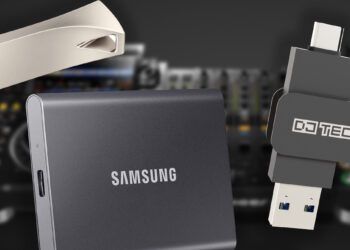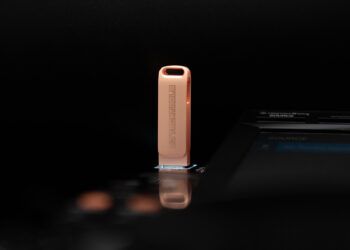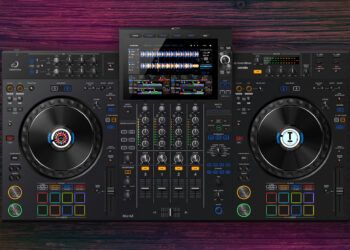Native Instruments Traktor Kontrol S8 is just a few weeks old and people still have a lot of questions about it including everything from what software is included to how you can edit beatgrids on the screen. To help clarify, we decided to pull together a bunch of important questions and answer for them in one clear post. Ryan even goes further, explaining how you can beat match without jog wheels and get the most out of the screens.
What Traktor software is included?
The Kontrol S8 ships with Traktor Scratch Pro 2. This causes a lot of confusion for people. What’s the difference between Traktor Scratch Pro 2 and Traktor Pro 2? The only difference is that Scratch Pro 2 allow you to connect turntables or CDJ’s to the Kontrol S8 and use Traktor timecode vinyl or CD’s to control Traktor’s decks/track playback. If you really miss having jog wheels or you’re serious about scratching, then having a turntable or CDJ may be necessary. (Note*: The Kontrol S8 doesn’t include timecode vinyl/cd’s, you’ll need to purchase these separately).
Do you need Scratch Pro 2 to use the Kontrol S8?
No, you can use the Kontrol S8 with Traktor Pro 2 as well. You’ll need to be running at least Traktor Pro 2.7 for Kontrol S8 compatibility. Anything version older then Traktor Pro 2.7 won’t work with the Kontrol S8.
How does standalone mixing work?
The Kontrol S8 can operate in standalone mode. That means you can disconnect your laptop and connect turntables or CDJ’s to the Kontrol S8 and DJ with vinyl, CD’s, or with usb sticks connected to a CDJ. When using standalone mode you can ignore the deck sections, the mixer section is the only thing that works in standalone mode. On this note you cannot connect usb sticks to the Kontrol S8 and use the screens in standalone mode. The screens will only work with Traktor running and your laptop connected.
How do you adjust the tempo of individual tracks?
You may have noticed that the Kontrol S8 is missing tempo faders, so how do you adjust the tempo to beat match? There are 2 ways that you can adjust the tempo. The first is with the main tempo knob that’s in the centre of the controller. With this you can adjust the master tempo or whichever track you have set to be the master. To view the BPM on the display, you’ll need to press the second button on the left side of each display. Now you can use the encoder beside the screen to adjust the BPM. By default it moves up/down in .01 increments. If we hold shift and move this knob or the tempo knob in the centre, the BPM will increase/decrease by 1. If you’re playing electronic music where the tempo never fluctuates i’d recommend using the main master clock and syncing all your tracks to it. This way you only have to adjust the main tempo knob and all your tracks will stay in sync and follow along. If you’re playing tracks where the BPM drifts then you’ll likely need to manually adjust the tempo instead of relying on sync. You can adjust the tempo of each track by disabling sync, then adjusting the BPM.
Besides effects, track loading, and remix deck views, what else can the displays do?
You can zoom in/zoom out on the waveform by pressing 2 buttons (square icons) on the right side of the display. You can also adjust the key of your track. If you have the key analyzed it will be displayed and you can adjust it up or down with the encoder. It will also indicate what the new key is when you adjust it. This makes it useful for harmonic mixing. You don’t want to adjust this more than a couple semitones otherwise it starts to affect the sound quality. You can also adjust the brightness of the displays by pressing the cogwheel to the left of each display.
Can you sort playlists?
Yes you can, you can sort your playlists by BPM, Import Date, Title, Artist, Key, and Rating. You can change how the playlists are sorted with the first encoder under the display.
Are you able to change the color of waveform?
At this time it’s not possible to change the color of the waveform. However the different shades of blue on the waveform can still be used to distinguish between highs, mids, and lows. The darkest shade shows low frequencies, while the lighter shade blue shows mids, and the the lightest shade which is almost white indicates high frequencies. Hopefully a future update will allow you to change the color of the spectrum (i.e. Spectrum)
How does beatgridding work?
With the built in screens it’s possible to adjust the beat grid directly from the Kontrol S8. To do this, press the edit button. Now you can adjust the BPM in whole values, or with fine control using the encoders. You can also adjust where the beat grid starts with the “offset” knob. Finally you can also tap the tempo in. With electronic music using the tap function is usually enough to give you a perfect grid.
With the remix decks, do you get access to all 4 pages?
It is possible to access all 4 remix deck pages. Since there are 8 pads on the S8, the cells are split across 8 pages. To scroll through them we can use the square buttons on the right side of the display. Of course our cells will change color to match the cells and we can also see what’s loaded in the cells on the display.
NEXT STEPS
- Still on the fence about the S8? – Check out our extensive overview.
- Thinking about getting one? Support Dj Techtoools and get your’s in the Webstore!
- Need more S8 tutorials – Grab Ean Golden’s full length S8 Tutorial here.










